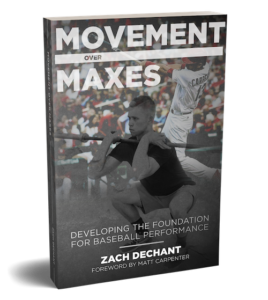Any male or female human adult acting under the stressors generated by violent interactive conflicts, such as war, over which he, or she, has no direct control, is consistently and negatively affected by the adverse control that the conflict's stressors have over the cognitive/affective sensibilities of the individual. The preexisting environmental stressors from previous unanticipated negative life experiences that accompany a person into wartime conflict, such the deaths and serious illnesses of family members, loss of jobs, and drug and alcohol addictions, etc. serve to add greater dimensions of dysfunction to the effects of violent stress. In other words, the measurable cumulative effect of all negative life experiences on a person can greatly influence the degree to which that person suffers the effect of war-induced post traumatic disorder.
Let's say, for instance, that John the valiant U.S. Marine has enlisted for three years to serve in Afghanistan as an infantryman to fight Taliban insurgents. Shortly after John arrives in Afghanistan, he receives word that his mother was killed in a fatal car crash in San Diego. John is allowed seven days leave, goes home, attends his mother's funeral, and returns to Afghanistan on the eighth day. In addition to the sum of the daily death and despair that John experiences in combat, he is, therefore, carrying around with him the death of his mother in his mind and psyche. To what deleterious degree does the stress of his mother's death exacerbate the stress that his accumulating because of his combat experiences in Afghanistan? An independent variable in this associative distribution of stressors is the timeframe. Let's say that the death of John's mother occurs six months before he enlists in the military, what negative stressors are still affecting John six months later when he joins the USMC? In most cases, no one ever knows what John is feeling and thinking until he becomes seriously overloaded with negative stress and demonstrates the symptoms of severe anxiety and a neurosis. Other negative life experience stressors may be added cumulatively to what veterans like John assume into their psyches before they are discharged from military service.
The effects of these stressors are substantially variable, from benignly stressful to harmfully stressful, depending upon the ability of the normal individual veteran to handle and process them. Nonetheless, the cumulative effects of this vulnerable stress, called diathesis stress, takes a pathogenic toll on every normal combat veteran in one way, or another. Only certified sociopaths, atypical human beings without conscience and the ability to show empathy, have the capacity to experience the morbidity of combat and all other negative life experiences without exhibiting the least bit of negative dysfunction. The actual use of convicted murderers and rapists, who were facing the death penalty in U.S. prisons, to serve as U.S. Marine Corps Raiders during the Second World War to fight the recalcitrantly entrenched Japanese on the Pacific Islands experientially proved this clinical assertion about sociopaths to be unquestionably true.
A replicable and reliable cumulative numerical scaling methodology for assessing and predicting the onset and total effect of stressful life experiences on soldiers, marines, airmen, and sailors returning home from combat environments is, therefore, greatly needed as a means of effective assessment of this severe depression inexorably resulting in suicide, and prompt intervention. The etiology and onset of this deleterious crippling depression resulting from diathesis (vulnerability) stress is, therefore, the inability of the normal human being's composite mind/body system to meaningfully and healthily process the overly-burdensome and pathological amount stress from negative life experiences. A mind/body breakdown of minor or severe proportions inevitably occurs at some point in a person's life as a direct result of crippling diathesis stress at the critical moment where the mind/body complex is incapable handling, or constructively and positively processing, the severe weight of the anxiety created by the concurrently acting stressors. The result of this breakdown has been given a clinical name to replace the formerly used terminology, "shell-shocked," which is post-traumatic stress disorder.
Cutting to the chase, long-story short, the first measurement of accumulated stress was configured by psychiatrists Thomas Holmes and Richard Rahe in 1967.
For adults, the measurement of life event-stress was quantified as the following:
Life event Life change units
Death of a spouse 100
Divorce 73
Marital separation 65
Imprisonment 63
Death of a close family member 63
Personal injury or illness 53
Marriage 50
Dismissal from work 47
Marital reconciliation 45
Retirement 45
Change in health of family member 44
Pregnancy 40
Sexual difficulties 39
Gain a new family member 39
Business readjustment 39
Change in financial state 38
Death of a close friend 37
Change to different line of work 36
Change in frequency of arguments 35
Major mortgage 32
Foreclosure of mortgage or loan 30
Change in responsibilities at work 29
Child leaving home 29
Trouble with in-laws 29
Outstanding personal achievement 28
Spouse starts or stops work 26
Beginning or end school 26
Change in living conditions 25
Revision of personal habits 24
Trouble with boss 23
Change in working hours or conditions 20
Change in residence 20
Change in schools 20
Change in recreation 19
Change in church activities 19
Change in social activities 18
Minor mortgage or loan 17
Change in sleeping habits 16
Change in number of family reunions 15
Change in eating habits 15
Vacation 13
Major Holiday 12
Minor violation of law 11
Score of 300+: At risk of illness.
Score of 150-299: Risk of illness is moderate (reduced by 30% from the above risk).
Score
|


















